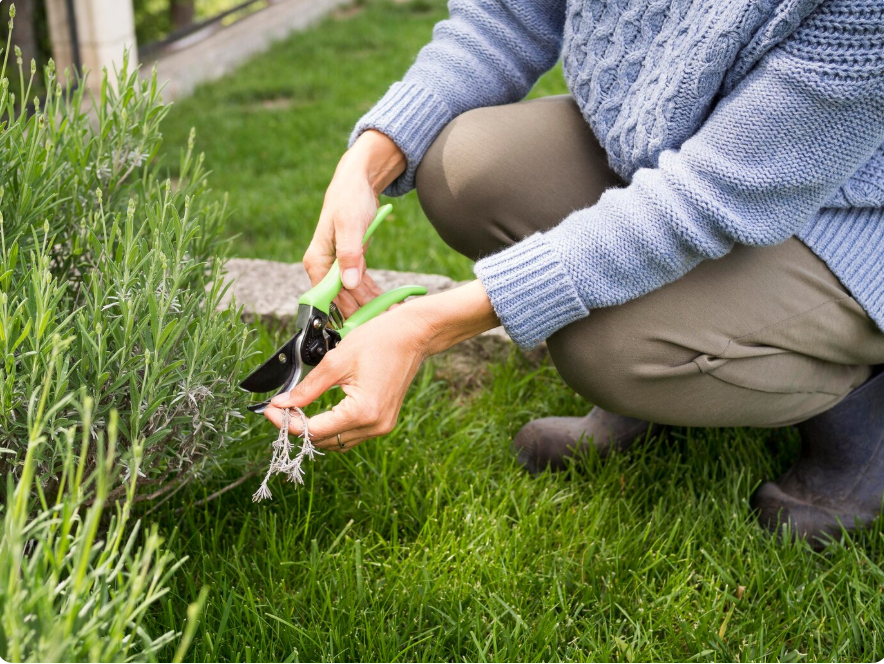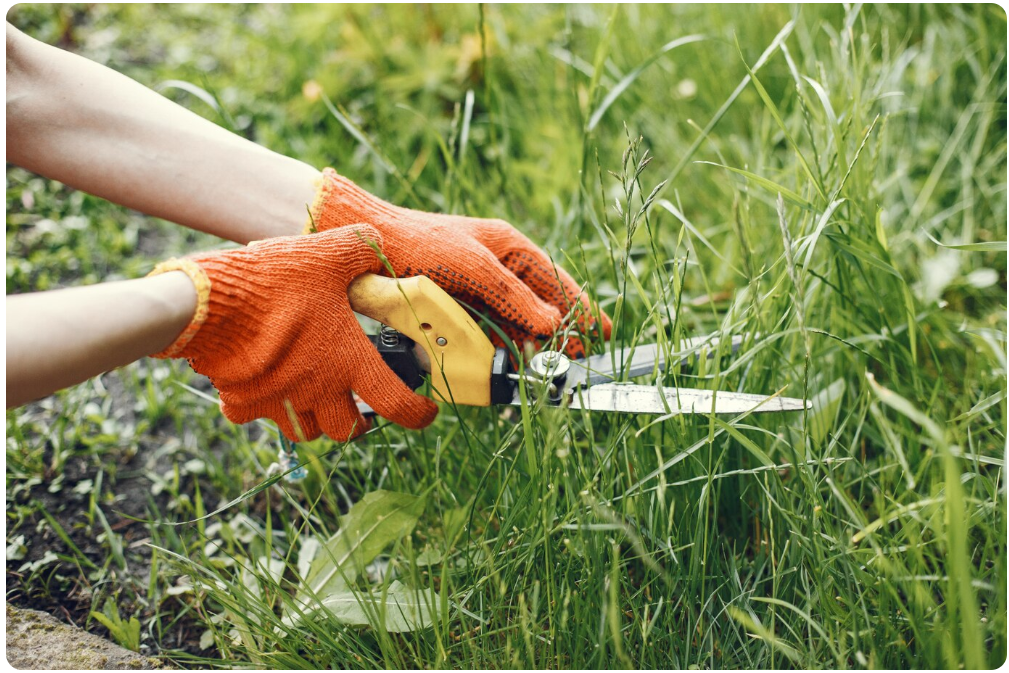Crabgrass is one of those invaders that come without an invitation to your premises and must be hastily thrown out. It grows up fast, spreads across, and takes over your lawn if left unattended. A patch or two of crabgrass can soon become your nightmare! You are not the only one battling crabgrass, and there is a straightforward solution.
This blog will walk you through some simple steps on how can you get rid of crabgrass and help you identify, prevent, and eliminate crabgrass.
What Is Crabgrass?

Before we get onto the solution for how can you get rid of crabgrass, let’s first understand what crabgrass is. Crabgrass is an annual weed, meaning it uses one season for its complete life cycle seed to plant and back to seed again. Its growth depends on warm conditions, and for germination to begin, soil temperature must be about 55-60F (13- 16 °C). That is usually spring for most parts of the world.
The two most common types include:
Smooth crabgrass (Digitaria ischaemum): Fine in appearance, it is short and low-growing.
Large crabgrass (Digitaria sanguinalis): Coarser, taller, and more apparent.
The spreading occurs from the centre to the outer periphery, and that is why it got the name Crabgrass.
Crabgrass just does not fit nicely into your lawn. Instead, it feels thicker, more coarse, lighter, and stands out. So if your lawn appears patchy and some blades are looking somewhat out of place, then crabgrass might be the culprit.
Why Crabgrass Is a Problem

Crabgrass competes with your lawn grass for water, nutrients, and sunlight. It grows fast, allowing it to rule your lawn in no time. In the fall, when it dies off, it leaves behind bare spots that take first place among dirt patches where weeds will develop in the next season. It is not just about how it looks; crabgrass can gradually harm your entire lawn. So the vision for how can you get rid of crabgrass starts with not just removing what you see, but also trying to prevent it from returning. A strong, healthy lawn is your best defense. The thicker your grass, the less space crabgrass has to grow. That’s why prevention and lawn care go hand in hand. If you stay consistent with maintenance, you can keep crabgrass from gaining ground year after year.
Step-by-Step Guide on How Can You Get Rid of Crabgrass
Now that you understand what crabgrass is and why it’s a problem, it’s time to take action. Follow these seasonal steps to control and prevent crabgrass effectively:
Step 1: Know When to Act
You can think of this as a cycle consisting of prevention, control, recovery, and preparation: each action leads into the next.
- If you skip spring prevention, then you’ll find yourself fighting crabgrass all summer.
- If you neglect fall repair, then your lawn will be vulnerable again the next year.
Timing is not about doing more; it’s about doing the right thing at the right time. Seasonal timing allows you to reduce crabgrass and, in doing so, strengthens your lawn, which becomes quite resilient and easy to manage over time. Rather than a one-time fix, it’s a series of steps that will be rewarding in time with patience and routine.
Step 2: Use a Pre-Emergent in Early Spring
This serves as an initial and primary line of defense. Pre-emergent herbicides are aimed at keeping crabgrass from growing by preventing seeds from sprouting. They do not kill existing plants.
The method of applying should be as follows:
- Wait for soil temperatures to be about 55°F for 3 to 5 days: Use a soil thermometer or track local weather; the blooming of forsythia bushes is commonly used as a guide.
- Mow the lawn before application: This allows for easier penetration of the product into the soil.
- Apply evenly to the lawn: Utilising a broadcast spreader is suggested for larger areas.
- Water it in: A pre-emergent needs water to activate the barrier formation within the soil.
What to use:
All products containing any given chemicals, among dithiopyr, prodiamine, and pendimethalin, all serve as good pre-emergent treatments for crabgrass.
Note: After application, keep soil disturbance to an absolute minimum, as it will break down the pre-emergent barrier and reduce its effectiveness.
Step 3: Pull Out Any Visible Crabgrass
Even if you put down pre-emergents, crabgrass might still make an appearance. If so, pull it out early; it might help. The two methods you can use are:
Hand-pull: Especially if it is still young and has not yet produced seeds. Loosen the soil first, This will help ensure that you take out the roots entirely.
Dispose of weeds: Do not compost them, as the weeds might contain seeds.
Catch it before crabgrass matures. One mature crabgrass plant can produce thousands of seeds.
Step 4: Spot-Treat With Post-Emergents
Once the crabgrass passes the pre-emergent treatment, a post-emergent herbicide can be used. This kind of weed killer works on crabgrass already in the sprouted stage.
Guidelines for the use of post-emergents:
- Choose the right product: Look for herbicides labeled specifically for crabgrass.
- Apply when the plant is young: Once the weed matures, it becomes harder to kill.
- Avoid mowing before or after application: This allows the weed to fully absorb the herbicide.
- Spray on a dry, calm day: So the herbicide sticks to the leaves and doesn’t drift.
- Products containing quinclorac or mesotrione make for adequate post-emergents. Do adhere to label instructions, lest you damage your lawn by overapplication.
Step 5: Fix Weak Spots in Your Lawn
Crabgrass weeds are fond of thin, bare spots in your turf lawn. If your grasses are thick, healthy, and well-maintained, crabgrass never gets a chance to grow.
To strengthen your lawn:
- Mow high: Keep grasses at least 3 inches tall. This will shade the soil from direct sunlight, preventing the germination of crabgrass seeds.
- Water deep and infrequently: Usually, just 1 inch of water suffices through one weekly watering. Frequent watering gives your grass shallow roots and a weak lawn.
Fertilizer at inappropriate times:
Apply a balanced fertilizer in spring and fall. In hot areas, don’t fertilize all summer.
Overseed during the fall:
If thin spots appear on your lawn, overseed during the fall. It gives grass the time to root before winter and fill in empty spaces where crabgrass can target in the spring.
Step 6: Maintain a Consistent Lawn Care Routine
Doing things just once is not enough to get rid of the crabgrass; the key is consistency.
Here’s a Seasonal plan:
Spring
Apply pre-emergent as early as possible.
Keep your mowing heights high.
Water deeply if necessary.
First light application of fertilizer.
Summer
Early crabgrass spotting and pulling.
Spot treat with post-emergents.
Continue mowing on high settings.
Water only when it is dry.
Fall
A second application of fertilizer.
Overseed if necessary.
Rake out dead crabgrass and repair bald patches.
Winter
Winter is a time to wait and prepare tools for spring.
Step 7: Avoid Common Mistakes
A few small missteps and crabgrass manage to gain the upper hand. Here’s what to watch for:
- Applying pre-emergent too late: Once the seeds germinate, it is too late.
- Excessive herbicide application: More is not better; it stresses the lawn.
- Not repairing lawns: Bare places become doorways for weeds to come in.
- Watering too much: It urges crabgrass to come.
- Cutting too short: Exposing the soil leads seeds to sprout.
- Stay sharp! The crabgrass is fierce, but with the right measures, we do manage.
Can You Kill Crabgrass Naturally?
There are some natural ways to control crabgrass:
- If you want to avoid chemicals, your options are limited, so more work and patience are required.
Manual options:
- Hand pulling: The surest method, especially in small patches of weed.
- Boiling water: This kills the plant but also damages grass nearby; it is best used in cracks or edges of the pavement.
- Vinegar: Some claim that strong horticultural vinegar will burn the weed away, but results vary.
- Corn gluten meal: Sometimes used as a natural pre-emergent herbicide; some users swear by it while others do not.
Natural options are only good on young plants. Once infestations get large, chemical options are usually more practical and effective.
Conclusion
Getting rid of crabgrass isn’t a sprint; it is about consistency. The best start is early in the year, applying those proper products while sustaining your lawn to stay strong. A thick and healthy lawn is the best defence. Here’s a wrap-up on how can you get rid of crabgrass:


